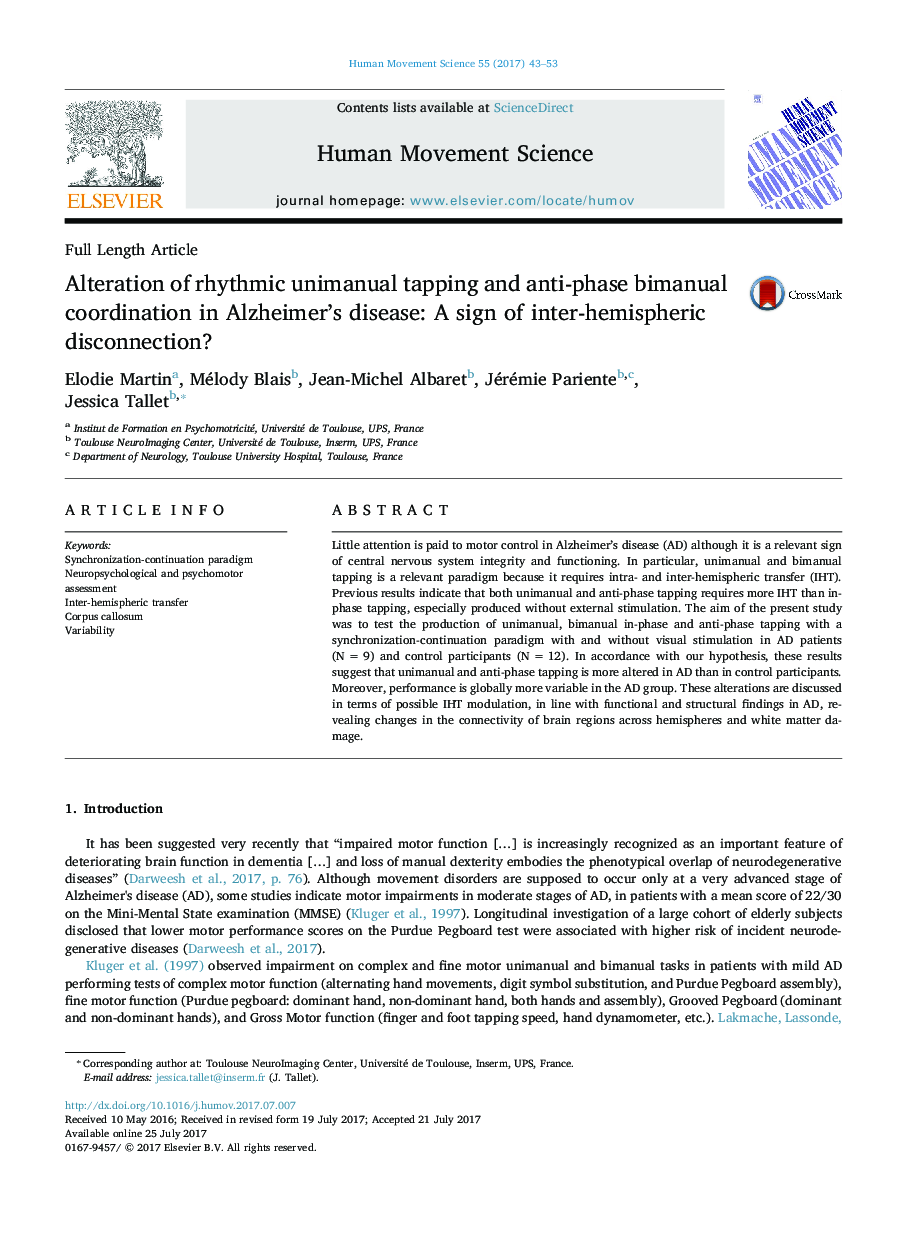| Article ID | Journal | Published Year | Pages | File Type |
|---|---|---|---|---|
| 5041927 | Human Movement Science | 2017 | 11 Pages |
â¢Rhythmic unimanual and bimanual tapping require inter-hemispheric transfer (IHT).â¢Unimanual and anti-phase tapping require more IHT than in-phase tapping.â¢Unimanual and anti-phase tapping are more variable in AD patients.â¢Behavioural alterations in AD could reflect functional or structural changes in IHT.
Little attention is paid to motor control in Alzheimer's disease (AD) although it is a relevant sign of central nervous system integrity and functioning. In particular, unimanual and bimanual tapping is a relevant paradigm because it requires intra- and inter-hemispheric transfer (IHT). Previous results indicate that both unimanual and anti-phase tapping requires more IHT than in-phase tapping, especially produced without external stimulation. The aim of the present study was to test the production of unimanual, bimanual in-phase and anti-phase tapping with a synchronization-continuation paradigm with and without visual stimulation in AD patients (NÂ =Â 9) and control participants (NÂ =Â 12). In accordance with our hypothesis, these results suggest that unimanual and anti-phase tapping is more altered in AD than in control participants. Moreover, performance is globally more variable in the AD group. These alterations are discussed in terms of possible IHT modulation, in line with functional and structural findings in AD, revealing changes in the connectivity of brain regions across hemispheres and white matter damage.
